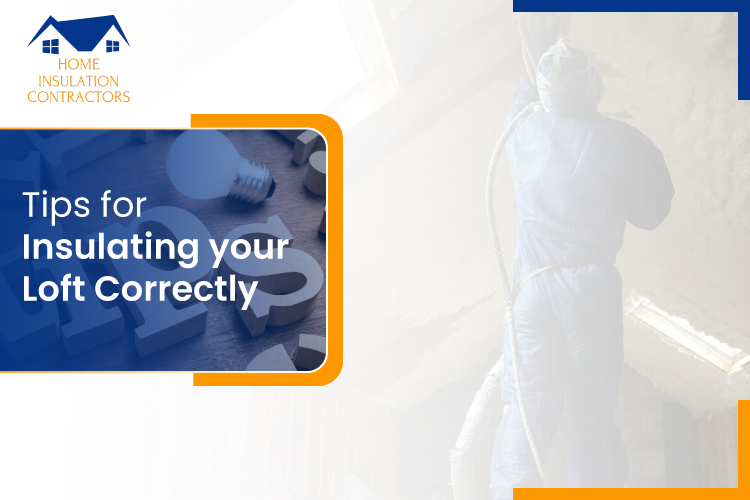You can save a lot of money by improving your loft’s insulation. A home with inadequate insulation can lose a quarter of its heat through the roof. Installing appropriate insulation is thus a straightforward option for your loft.
Who is this guide meant for?
- Anyone who wants to geek out about loft insulation and is just generally interested about it.
- If you wish to brush up on your information while comparing various loft insulation companies.
- Anyone who feels they require improved insulation to reduce their energy costs and enhance their home’s worth.
- If you are someone who’s interested in DIY and wants to learn how to install insulation on your own.
Some lofts have improperly installed floors and insufficient insulation. Condensation and Dampness may be generated by this. As a result, mould may develop, increasing your risk for respiratory issues along with moisture. If you suspect a damp issue, it is possible that it’s damaging your health or the health of many other family members.
If insulation is compressed by a poorly built loft floor, issues can emerge. That would prevent air from circulating between the insulation and the floor.
This can therefore result in problems like:
- Loss in thermal effectiveness of the insulation.
- Strain on the Ceiling.
- When it contacts the cooler surface of the bottom of the loft flooring, the water vapour produced inside the house rises.
- The insulation may develop condensation.
- The ceilings are then affected by dampness caused by condensation as it begins to seep lower.
- The right amount of ventilation is crucial if you plan to use your loft as storage.
- It should be considered a bare minimum requirement.
How does insulation in lofts function?
Simply said, loft insulation prevents warm air from escaping through the ceiling of your home by trapping it inside. If properly fitted, it will still permit moisture to flow through it, preventing condensation.
Much of the heat you produce to stay warm will leave through the walls, floor, doors, and windows of an uninsulated home especially through your loft, which is located on the roof.
As a result, you generate more warmth than you require, which raises your energy costs and carbon footprint. It works just fine for many of us to know that loft insulation is effective. You don’t have to be precise, but you should always estimate too much so you have additional insulation available. Remember that insulation should never be placed directly into the soffit because doing so will obstruct ventilation.
If you want a warm loft, you will need a lot more insulation to be able to line the gable and party walls as well as the underside of the roof.
It won’t be simple to measure up for this kind of job on your own, therefore this would be an excellent opportunity to hire an insulation professional and to know about precise loft insulation cost in the UK.
Tips for Insulating your Loft Correctly
No matter where you live or what time of the year it is, having the right amount of insulation will enable you to save money, keep you comfortable, and preserve energy. Although your entire home should be insulated, installing insulation in your loft may be more important than anywhere else.
Insulation keeps the hot air from the loft from heating the living spaces below in the summer and prevents heated room air from flowing up into the loft during the winters. Simply said, insulating your loft will increase the comfort and energy efficiency of your entire house.
Here are eight do-it-yourself suggestions for attic insulation:
- Appropriately Dressed
It seems sense to safeguard your face, eyes, and lungs from harmful fibres when handling any insulation. Make sure you put on long-sleeved shirts, long pants, gloves, tight-fitting eye protection, a dust mask, or a dual-cartridge respirator.
- Understand amount of insulation you require
Even if installing too much won’t endanger your family or house, it will cost you money. Consult the building department of your town for more detailed information.
- Put extra insulation
Install Kraft paper-faced fibreglass rolls or batts between each loft floor joist if your loft isn’t already insulated. Insulation should extend to the bottom of the joists. Lay unfaced fibreglass or mineral wool insulation, running it perpendicular to the joists, to further improve the attic’s insulating value.
- Improve Existing Insulation
If your loft already has insulation between floor joists, you can significantly improve your home’s energy efficiency by putting extra insulation over it. Put the current insulation with unfaced mineral or use spray foam insulation. Just keep in mind to run it parallel to the joists. Although loose-fill fibreglass or cellulose can be used to level over existing insulation, spray foam insulation is quicker and the best insulation material for loft which is aesthetically more pleasing to install.
- Allow Space
Because air insulates well, most insulations are often light and fluffy. When you are insulating your loft, keep that in mind. The error that many individuals make is that they jam the insulation into small areas, which squeals out the air and hampers insulation value.
- Block Ceiling Holes
Despite their seeming modest size, these gaps represent significant energy leaks and must be repaired for the insulation to perform at its best in terms of energy efficiency. Most holes and cracks can be filled with little expanding spray foam insulation.
- Beware of Recessed Lights
Before installing the insulation, it’s crucial to figure out what kind of recessed light fixture is sticking up into the attic from below. Massive amounts of heat are produced by recessed lights, which might ignite the insulation and cause a house fire. When a cylindrical metal can stick to the attic to signify a conventional recessed fixture, you must maintain all insulation at least a few inches from the fixture. Ask a professional or loft insulators near me if you’re unsure of the kind of recessed fixtures you have. In a nutshell, by following these specific guidelines, you may create a properly insulated loft that maintains your house cosy and energy efficient. Insulation installation process is simple and effective if the correct tools, material, and information are being used by professionals.


